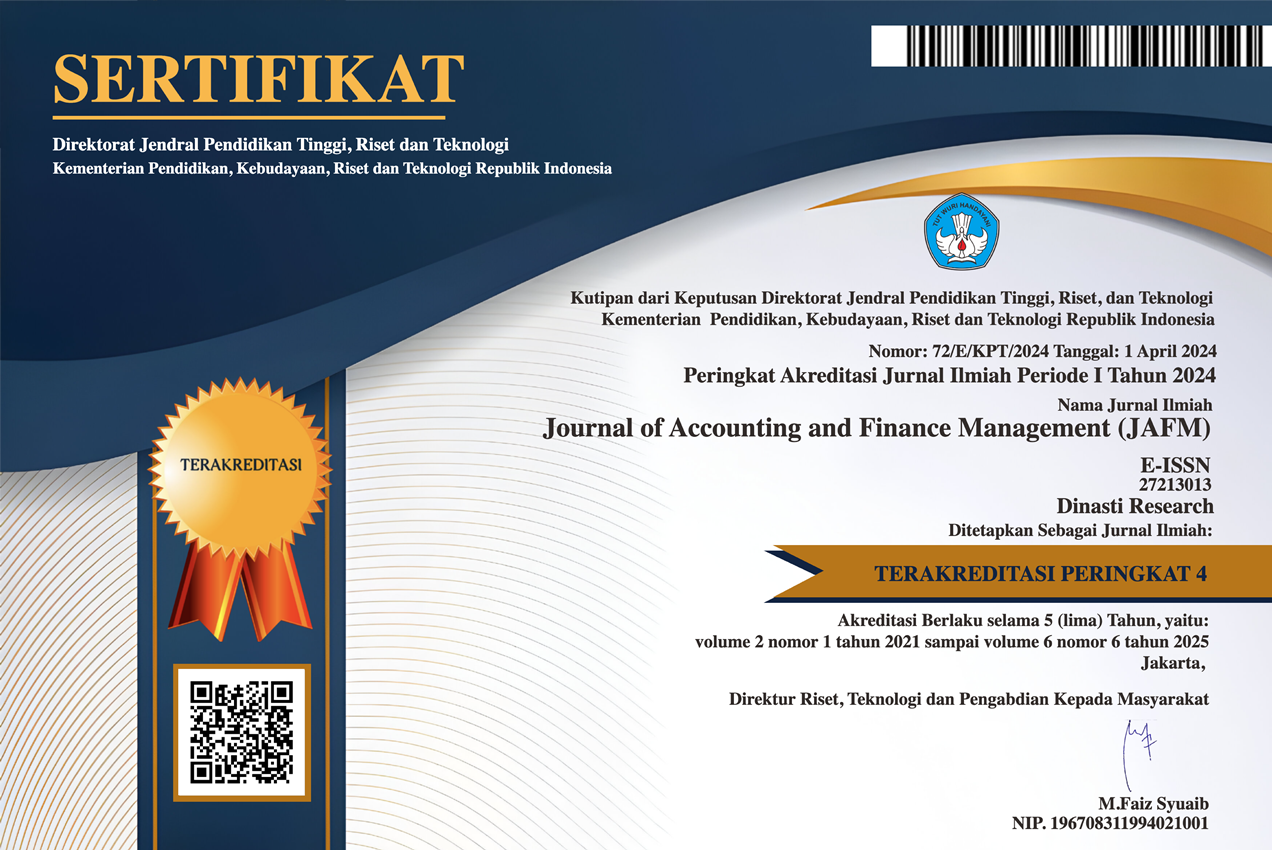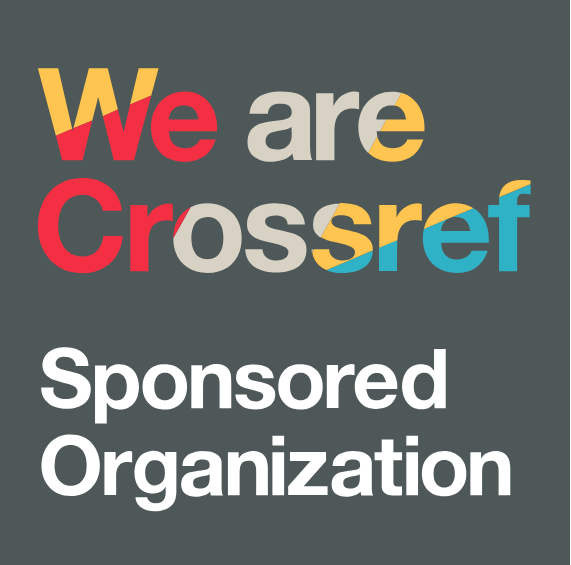Analyzing the Determinants of BNPL Users Among Young People in West Sumatera: A Logistic Regression Approach
DOI:
https://doi.org/10.38035/jafm.v5i6.1413Keywords:
Buy Now Pay Later (BNPL), BNPL Promotions, Social Influence, Financial Self-Control, Socio-Economic Factors, Logistic Regression, Young GenerationAbstract
This study aims to analyze the factors influencing the use of Buy Now, Pay Later (BNPL) services among the youth in West Sumatra using a logistic regression approach. The factors tested include socio-economic characteristics (gender, education level, and income), BNPL promotions, social influence, and financial self-control. Data were collected through a survey with a sample of 200 respondents consisting of millennials and Generation Z in the area. The findings demonstrate that BNPL promotion and social influence significantly and positively affect BNPL adoption, while gender, education, income, and financial self-control show no significant impact. These findings provide the importance of effective and responsible marketing strategies and social validation in driving BNPL usage. This study also recommends strengthening regulations to enhance consumer protection in the technology-based financial services ecosystem.
References
Aalders, R. (2023). Buy now, pay later: redefining indebted users as responsible consumers. Information, Communication & Society, 26(5), 941–956. https://doi.org/10.1080/1369118X.2022.2161830
Agustin, L. (2022). Evaluation of Factors influencing the Shopee PayLater adoption in Indonesia. Management Science and Business Decisions, 2(2), 5–18. https://doi.org/10.52812/msbd.49
Aji, H. M., Berakon, I., & Riza, A. F. (2020). The effects of subjective norm and knowledge about riba on intention to use e-money in Indonesia. Journal of Islamic Marketing, 12(6), 1180–1196. https://doi.org/10.1108/JIMA-10-2019-0203
Andrews. (2021). Shop now, stress later. Money.Co.Uk. www.money.co.uk/credit-cards/%0Abnpl-stress
Blue, L., Coglan, L., Pham, T., Lammer, I., Menner, R., & Lee, C. (2023). Spend and Repeat! Young Adult’s Experiences with Buy Now Pay Later Services. Financial Planning Research Journal, 9(1), 1–19. https://doi.org/10.2478/fprj-2023-0002
Chinoda, T., & Mashamba, T. (2021). Fintech, financial inclusion and income inequality nexus in Africa. Cogent Economics & Finance, 9(1). https://doi.org/10.1080/23322039.2021.1986926
Cook, J., Davies, K., Farrugia, D., Threadgold, S., Coffey, J., Senior, K., Haro, A., & Shannon, B. (2023). Buy now pay later services as a way to pay: credit consumption and the depoliticization of debt. Consumption Markets and Culture, 26(4), 245–257. https://doi.org/10.1080/10253866.2023.2219606
Desikan. V. (2023). A Study on Customer Preferences towards Buy Now Pay Later (BNPL) Services and its Impact on their Financial Well-Being in Chennai City. Journal of Development Economics and Management Research Studies, 10(16), 188–196. https://doi.org/10.53422/jdms.2023.101625
Di Maggio, M., Katz, J., & Williams, E. (2023). The Workshop on Payments, Lending and Innovations in Consumer Finance at the Federal Reserve Bank of Philadelphia, NBER Innovative Data in Household Finance, Workshop on "Financial Intermediation and Corporate Finance. Byu.
Elsayed, A., Fung, C. M., & Wu, H. (2022). Impulsive Buying Behaviour on BNPL Services A quantitative study on the buying behaviour of Generation Z. School of Economics and Management, May.
Filotto, U., Salerno, D., Sampagnaro, G., & Paolo, G. (2024). Research in International Business and Finance Riding the wave of change?: Buy now , pay later as a disruptive threat to payment cards in the global market. Research in International Business and Finance, January.
Gallo Cordoba, B., Waite, C., & Walsh, L. (2024). Towards a causal link between food insecurity and buy-now-pay-later use by young Australians. Young Consumers. https://doi.org/10.1108/YC-11-2023-1912
Haws, K. L., Davis, S. W., & Dholakia, U. M. (2016). Control over what? Individual differences in general versus eating and spending self-control. Journal of Public Policy and Marketing, 35(1), 37–57. https://doi.org/10.1509/jppm.14.149
Hohnen, P., Gram, M., & Jakobsen, T. B. (2020). Debt as the new credit or credit as the new debt? A cultural analysis of credit consumption among Danish young adults. Journal of Youth Studies, 23(3), 356–370. https://doi.org/10.1080/13676261.2019.1609660
Irsya, D. K., & Faturohman, T. (2024). The Demographical Analysis Of Indonesian Buy-Now- Pay-Later Users Financial Wellbeing. Jurnal Ilmiah Ekonomi Dan Bisnis, 12(4), 3861–3872.
Juita, V., Pujani, V., Rahim, R., & Rahayu, R. (2023a). The Influence of User’s Digital Financial Literacy and Perceived Risks on Buy Now Pay Later (BNPL) Adoption: A Gender’s Perspective (Issue Icelbi 2022). Atlantis Press International BV. https://doi.org/10.2991/978-94-6463-350-4_63
Juita, V., Pujani, V., Rahim, R., & Rahayu, R. (2023b). Understanding Impulsive Buying Behaviour Among Buy Now Pay Later (BNPL) Users and its Implication for Overconsumption and The Environment. Management Analysis Journal, 12(4), 433–440. https://doi.org/10.15294/maj.v12i4.75816
Morgan, R. (2019). Women more likely to use Buy-Now-Pay-Later services.
Pratama, A., & Anas, E. P. (2024). Financial Technology Adoption On Payment Systems And Financial Transactions Among Millenials In Indonesia. Jurnal Ilmiah Indonesia, 9. https://doi.org/http://dx.doi.org/10.36418/syntax-literate.v9i3
Powell, R., Do, A., Gengatharen, D., Yong, J., & Gengatharen, R. (2023). The relationship between responsible financial behaviours and financial wellbeing: The case of buy-now-pay-later. Accounting and Finance, 63(4), 4431–4451. https://doi.org/10.1111/acfi.13100
Raj, V. A., Jasrotia, S. S., & Rai, S. S. (2024). Intensifying materialism through buy-now pay-later (BNPL): examining the dark sides. International Journal of Bank Marketing, 42(1), 94–112. https://doi.org/10.1108/IJBM-08-2022-0343
Safira, I. D., & Kusumawati, N. (2019). the Drivers for Acceptance of Non-Credit Card Installment Services. Proceeding Book of The 4th ICMEM 2019 and The 11th IICIES 2019, August 2019, 7–9.
Schomburgk, L., & Hoffmann, A. (2023). How mindfulness reduces BNPL usage and how that relates to. 57(2), 325–359. https://doi.org/10.1108/EJM-11-2021-0923
Sekaran, U., & Bougie, R. (2016). Research Methods for Business: A Skill-Building Approach. In Leadership & Organization Development Journal (7th ed., Vol. 34, Issue 7). Wiley.
Thomas, B., & Subhashree, P. (2020). Behavioural and Psychological Factors That Influence the Usage of Formal Financial Services Among the Low Income Households. Research in World Economy, 11(5), 326. https://doi.org/10.5430/rwe.v11n5p326
Yu Jing, T., Yi, S., Nik Abdullah, N. H., Sok Fun, C., Johari, A. F., Jan Sian, K. V., & Yong Ming, K. L. (2024). The Impact of Social Media on BNPL Adoption in Malaysia. International Journal of Academic Research in Business and Social Sciences, 14(9). https://doi.org/10.6007/IJARBSS/v14-i9/22754
Downloads
Published
How to Cite
Issue
Section
License
Copyright (c) 2025 Fachrum Nisa, Mohamad Fany Alfarisi, Masyhuri Hamidi

This work is licensed under a Creative Commons Attribution 4.0 International License.
Authors who publish their manuscripts in this journal agree to the following conditions:
- The copyright on each article belongs to the author(s).
- The author acknowledges that the Journal of Accounting and Finance Management (JAFM) has the right to be the first to publish with a Creative Commons Attribution 4.0 International license (Attribution 4.0 International (CC BY 4.0).
- Authors can submit articles separately, arrange for the non-exclusive distribution of manuscripts that have been published in this journal into other versions (e.g., sent to the author's institutional repository, publication into books, etc.), by acknowledging that the manuscript has been published for the first time in the Journal of Accounting and Finance Management (JAFM).



























